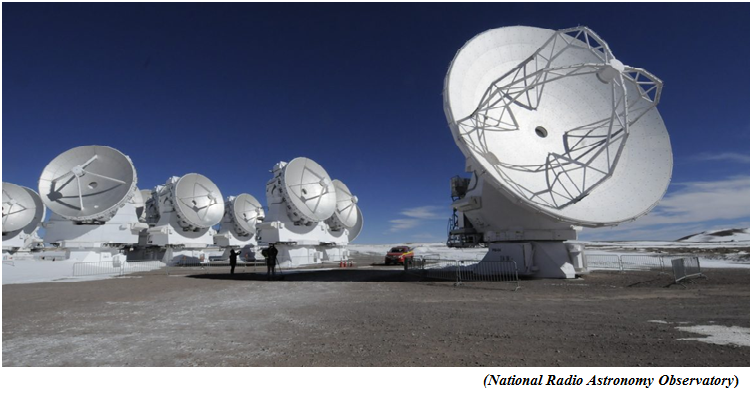The sophisticated anatomy of heat waves (GS Paper 3, Environment)

Why in news?
- Recently, the India Meteorological Department (IMD) warned that the maximum temperatures over northwest, west, and central India would be 3-5°C higher than the long-term average.
- On February 21, the national capital recorded its third hottest February day (33.6° C) in more than five decades.
What is a heat wave?
- According to the IMD, a region has a heat wave if its ambient temperature deviates by at least 4.5-6.4°C from the long-term average.There is also a heat wave if the maximum temperature crosses 45°C (or 37°C at a hill-station).
- Heat waves are expected to become longer and more intense and frequent over the Indian subcontinent. In 2022 itself, the heat waves started early and were more numerous.
- They also extended further south into peninsular India due to a north-south pressure pattern set up by the La Niña, a world-affecting weather phenomenon in which a band of cool water spreads east-west across the equatorial Pacific Ocean.
- The last three years have been La Niña years, which has served as a precursor to 2023 likely being an El Niño year. The El Niño is a complementary phenomenon in which warmer water spreads west-east across the equatorial Pacific Ocean. Heat waves tend to be confined to north and northwest India in El Niño years.
How do heat waves occur?
- Heat waves are formed for one of two reasons; warmer air is flowing in from elsewhere or it is being produced locally.
- It is a local phenomenon when the air is warmed by higher land surface temperature or because the air sinking down from above is compressed along the way, producing hot air near the surface.
Direction of air-flow:
- In spring, India typically has air flowing in from the west-northwest. This direction of air-flow is bad news for India for several reasons. In the context of climate change, West Asia is warming faster than other regions in latitudes similarly close to the equator, and serves as a source of the warm air that blows into India.
- Likewise, air flowing in from the northwest rolls in over the mountains of Afghanistan and Pakistan, so some of the compression also happens on the leeward side of these mountains, entering India with a bristling warmth.
- While air flowing in over the oceans is expected to bring cooler air, the Arabian Sea is unfortunately warming faster than most other ocean regions.
Westerlies:
- The strong upper atmospheric westerly winds, that come in from the Atlantic Ocean over to India during spring, control the near-surface winds. Any time winds flow from the west to the east, the winds are blowing faster than the planet itself, which is also rotating from west to east.
- The energy to run past the earth near the surface, against surface friction, can only come from above. This descending air compresses and warms up to generate some heat waves.
Declining Lapse rate:
How does air mass contribute to heat waves?
- The other factors that affect the formation of heat waves are the age of the air mass and how far it has travelled. The north-northwestern heatwaves are typically formed with air masses that come from 800-1,600 km away and are around two days old.
- Heat waves over peninsular India on the other hand arrive from the oceans, which are closer (around 200-400 km) and are barely a day old. As a result, they are on average less intense.
Conclusion & Way Forward:
- In sum, heat waves have a sophisticated anatomy with important implications for how well they are predicted. Nonetheless, early-warning systems can take advantage of the processes, modes of formation, location, and age of the air mass to improve the quality of warnings and also increase how soon they can be issued.
- Sizeable investments in human and computational resources have already increased India’s forecast skills in the last decade.
The multi year cyber attack on GoDaddy servers and its impact
(GS Paper 3, Science and Tech)
Why in news?
- Recently, an unauthorised third-party gained access to GoDaddy servers in its cPanel shared hosting environment, the company shared in a blog post.
- Attackers installed malware on servers causing intermittent redirection of customer websites to malicious sites leading to increased chances of successful phishing campaigns.

What does GoDaddy do?
- GoDaddy is one of the largest domain registrar and web hosting platforms. The company offers services like eCommerce solutions, SSL certificates, professional business emails, web servers, and website builders.
- Its WordPress shared hosting services allow users to manage and build websites using plug-ins and themes. GoDaddy currently has 1.5 million paying customers with $4 billion in revenues.
What are redirects, and how do they work?
- Redirect, redirecting, or URL forwarding is a method used to ensure that web pages with more than one URL can be accessed by users who do not have the precise or all the existing URLs.
- Redirects are predominantly used when a site is shifted to a new domain where multiple URLs are available for the same webpage. Or, when two or more websites are merged, and when a web page is removed and users are sent to a new page to ensure continued services.
- Setting up a server-side redirect, the kind used by threat actors in the attack on GoDaddy servers requires access to server configuration files or setting the redirect headers with server-side scripts.
- End-users are mostly unaware when they are being redirected to a new web page unless the web browser they use notifies them. However, redirects can be used by threat actors to get unsuspecting users to visit, interact and share information on malicious web pages.
How did they carry out the attack?
- The attack on its servers in December 2022 granted threat actors access to the company’s shared servers. Cybercriminals obtained pieces of code related to some services within GoDaddy and installed malware that intermittently redirected random customer websites to malicious sites.
- The company shared that the redirects were happening on seemingly random websites hosted on its cPanel shared hosting servers and were not easily reproducible by GoDaddy, even on the same website.
- A cPanel is an online Linux-based graphical interface (GUI) used as a control panel to simplify website and server management for website owners and developers. These redirects could be used by threat actors to run successful phishing campaigns on the websites of GoDaddy users.
What was the impact of the attack?
- To date, these incidents as well as other cyber threats and attacks have not resulted in any material adverse impact to the business or operations.
- However, the impact of phishing campaigns carried out by threat actors by intermittently redirecting customers’ websites is yet to be ascertained.
- Since GoDaddy’s business involves the storage and transmission of confidential information, including personal information and payment card information they could be subject to liability, loss of business, litigation, government investigations, or other losses in case of a breach of sensitive data.
ALMA telescope will soon get a ‘new brain’
(GS Paper 3, Environment)
Why in news?
- The Atacama Large Millimetre/submillimetre Array (ALMA), a radio telescope comprising 66 antennas located in the Atacama Desert of northern Chile is set to get software and hardware upgrades.
- It will help it to collect much more data and produce sharper images than ever before.
- It added that the upgrades would take around five years to finish and cost $37 million.

New Correlator:
- The most significant modernisation made to ALMA will be the replacement of its correlator, a supercomputer that combines the input from individual antennas and allows astronomers to produce highly detailed images of celestial objects.
- Today, ALMA’s correlators are among the world’s fastest supercomputers. Over the next 10 years, the upgrade will double and eventually quadruple their overall observing speed.
Collaboration:
- As ALMA is operated under a partnership among the United States, 16 countries in Europe,Canada, Japan, South Korea, Taiwan, and Chile, the announcement came after all the partners cleared the funding required for the improvements.
- Fully functional since 2013, the radio telescope was designed, planned and constructed by the US’s National Radio Astronomy Observatory (NRAO), the National Astronomical Observatory of Japan (NAOJ) and the European Southern Observatory (ESO).
- Over the years, it has helped astronomers make groundbreaking discoveries, including that of starburst galaxies and the dust formation inside supernova 1987A.
What is ALMA?
Why is ALMA located in Chile’s Atacama Desert?
- ALMA is situated at an altitude of 16,570 feet (5,050 metres) above sea level on the Chajnantor plateau in Chile’s Atacama Desert as the millimetre and submillimetre waves observed by it are very susceptible to atmospheric water vapour absorption on Earth.
- Moreover, the desert is the driest place in the world, meaning most of the nights here are clear of clouds and free of light-distorting moisture, making it a perfect location for examining the universe.
What are some of the notable discoveries made by ALMA?
- With ALMA’s capability of capturing high-resolution images of gas and dust from which stars and planets are formed and materials that could be building blocks of life, scientists are trying to find answers to age-old questions of cosmic origins.
- One of the earliest findings came in 2013 when it discovered starburst galaxies earlier in the universe’s history than they were previously thought to have existed.
- Next year, ALMA provided detailed images of the protoplanetary disc surrounding HL Tauri, a very young T Tauri star in the constellation Taurus, approximately 450 light years from Earth and transformed the previously accepted theories about the planetary formation.
- In 2015, the telescope helped scientists observe a phenomenon known as the Einstein ring, which occurs when light from a galaxy or star passes by a massive object en route to the Earth, in extraordinary detail.
- More recently, as part of the Event Horizon Telescope project, a large telescope array consisting of a global network of radio telescopes, it provided the first image of the supermassive black hole at the centre of our own Milky Way galaxy. The image was unveiled by scientists in May 2022.




